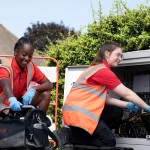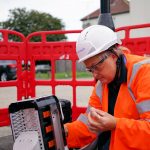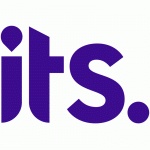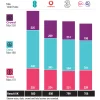MPs Tell UK Gov to Prioritise Rural 4G Mobile Cover over Licence Fees
A new cross-party report has warned that there is “no silver bullet for how to improve rural mobile coverage” in the United Kingdom, but it has recommended five ways in which the Government could boost 4G network coverage enough to help achieve or beat the current target for 95% geographic coverage by 2022.
At present EE (BT) already claims to have reached a geographic coverage level with their 4G network of 90% and they aim to cover 95% by the end of December 2020. Unfortunately Ofcom’s most recent coverage update revealed that this figure drops to just 64% when looking at coverage delivered in the same areas by all four primary mobile operators (here).
The regulator does of course plan to improve mobile availability by attaching stricter coverage obligations to next year’s auction of the 5G and 4G friendly 700MHz band (formerly used for Digital Terrestrial TV), which will require better indoor reception and that at least two operators must commit to reach 92% of the UK land area with good reception (here).
Advertisement
However 5G will take time to deploy and large-scale commercial deployments won’t even begin until 2020, when all of the necessary spectrum has become available (inc. 700MHz). In the meantime Ofcom have been examining further options for improving mobile coverage in rural areas (here), which is important because it can be economically unviable for the operators to expand into areas that have a low population density.
As part of all this the All-Party Parliamentary Group (APPG) for Rural Business has just published a new report that makes five recommendations to support better 4G coverage (this also means greater access to faster Mobile Broadband connectivity).
Julian Sturdy MP, Chair of the APPG, said:
“While this report focuses solely on improving 4G coverage we are concerned that the Government has become distracted by the pursuit to achieve 5G, of which it has already committed £200 million2, and that the countryside which is still lacking decent 4G coverage will lag behind. You cannot achieve 5G coverage without having a high-quality network in place for 4G and our report seeks to identify solutions to help achieve this goal across the countryside.
The recommendations that came out of this inquiry have at their heart the aim to improve rural coverage by overcoming the barriers highlighted by the operators themselves, rural interest groups and our own experiences as Members of Parliament.”
The Five Recommendations
1. Introduce rural roaming
The introduction of a single rural network in areas which are hard to reach, with the ability to roam between network providers allowing users, regardless of their service provider, to access the network.2. Increasing transparency and accountability
Mobile operators to be compelled to regularly publish their coverage plans for roll out for the next 12 months and where they have developed in the previous six months. This is to be based on actual rather than predicted coverage. This will increase public awareness of their plans to improve coverage as well as allowing mobile operators to be held accountable for the delivery of their plans.3. Prioritising coverage over licence fees
Ofcom should make meeting the Government’s 95% geographic coverage target by 2022 the primary ambition of the 700Mhz spectrum auction rather than maximising the spectrum fees paid by operators.4. Ensuring mobile connectivity is at the heart of planning
The inclusion of future mobile infrastructure must be included within local plans while large infrastructure projects must make the provision of increased mobile connectivity a core component of the project’s delivery.5. Instilling an integrated approach
Mobile operators, the Department for Digital, Culture, Media and Sport and Ofcom must by April 2019 produce a joint strategy on how to achieve 95% geographic mobile coverage by 2022 as outlined in the Conservative 2017 Manifesto.
The rural roaming idea could be difficult to implement due to the competitive commercial nature of such networks, although elements of this sound similar to Ofcom’s existing proposal for an infrastructure sharing solution. Getting everybody to agree on access rights and costs won’t be easy.
Meanwhile no.2 (coverage transparency) sounds easy enough with respect to future plans, although anybody expecting operators to be able to produce an accurate prediction of coverage in a mobile environment, which is influenced by many changeable factors (weather, new buildings, different devices etc.), may end up being disappointed. Certainly there may be ways to improve coverage forecasts but perfect accuracy seems unlikely.
Advertisement
As for no.3, we suspect that the Government and Ofcom would say they’re already prioritising coverage over licence fees within their current approach, although operators tend to take a different viewpoint and believe they often end up paying too much and that this can then hinder investment in the roll-out. This will always be a difficult one to balance, particularly when attaching coverage obligations that could discourage bidding.
Thankfully the planning reform proposed for no.4 appears to be one area where there’s some agreement and this also formed part of the Government’s new Future Telecoms Infrastructure Review (here). Recent agreements with major landowners should help to support this, although there are still problems that need to be overcome (here).
Finally, we suspect that the joint strategy (no. 5) idea might struggle to be established by April 2019 but it’s a good idea and if anything it should have already been done by now.
Mark is a professional technology writer, IT consultant and computer engineer from Dorset (England), he also founded ISPreview in 1999 and enjoys analysing the latest telecoms and broadband developments. Find me on X (Twitter), Mastodon, Facebook, BlueSky, Threads.net and Linkedin.
« Broadband Access Reduced UK Cinema Visits and Civic Engagement


















































Comments are closed